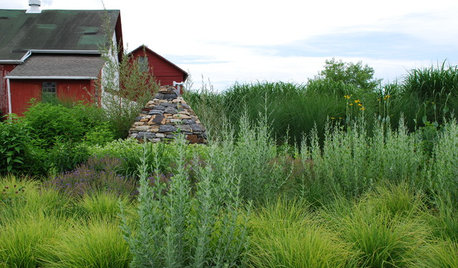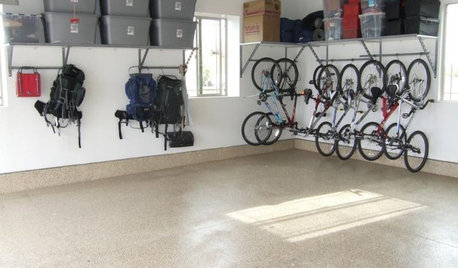Catch Barrel?
arbpdl
11 years ago
Related Stories

TASTEMAKERSCatching Up With the Queen of Shabby Chic
Rachel Ashwell defined a style embraced by countless fans over the past 25 years. Find out what she’s turning her sights to now
Full Story
HOUZZ TVHouzz TV: How to Install a Rain Barrel
This DIY tutorial shows how easy it can be to capture rainwater from your roof to use in your garden later
Full Story
GREEN BUILDINGHow to Harvest Rainwater for Your Garden
Conserve a vital resource and save money by collecting stormwater for irrigation in a barrel or tank
Full Story
MATERIALSHumble Corrugated Metal Brings Modern Style to the Garden
This sustainable material is not just for rooftops. See these ideas for using it for fences, beds and rain barrels in your yard
Full Story
LANDSCAPE DESIGNProblem Solving With the Pros: An Abundant Garden Stretches Its Means
Swaths of resilient, eye-catching plants thrive with little care or resources in the landscape of a Pennsylvania farmhouse
Full Story
GARDENING AND LANDSCAPING9 Ways to Enjoy Gardening More This Summer
Catch the rain, go vertical, add a gabion, grow vegetables out front and more
Full Story
MOST POPULARGarage Cleaning Tips for the Overwhelmed
Don’t let this catch-all space get the better of you. These baby steps can get you started
Full Story
GARDENING GUIDESHow to Get Your Landscape Ready for Summer Storms
Don’t let high winds, dust storms and torrential rainfall catch you or your landscape by surprise
Full Story
CONTEMPORARY HOMESHouzz Tour: An Architect’s Art-Worthy Abode
White gallery walls, midcentury furniture and a collection of eye-catching art make this New York City apartment a showpiece in the sky
Full Story
FUN HOUZZ11 Extraordinary Playhouses That Dream Big
Catch these imaginative custom playhouse designs before they find happily-ever-after homes off the show floor
Full StoryMore Discussions







User
lazypup
Related Professionals
Boise Plumbers · Vienna Handyman · Eagle Mountain Kitchen & Bathroom Remodelers · Auburn Kitchen & Bathroom Remodelers · Eureka Kitchen & Bathroom Remodelers · Kuna Kitchen & Bathroom Remodelers · North Arlington Kitchen & Bathroom Remodelers · Pico Rivera Kitchen & Bathroom Remodelers · Sicklerville Kitchen & Bathroom Remodelers · South Plainfield Kitchen & Bathroom Remodelers · Sun Valley Kitchen & Bathroom Remodelers · Tempe Kitchen & Bathroom Remodelers · York Kitchen & Bathroom Remodelers · Shaker Heights Kitchen & Bathroom Remodelers · Wellesley Kitchen & Bath Fixturesalan_s_thefirst
lazypup
ionized_gw
piedmontnc